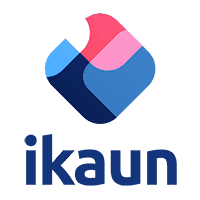With the boom of digital workplaces and the amount of data rising, companies are struggling to capture some of their most important resources — their intellectual capital. Knowledge management software has evolved to solve this problem. But why are our knowledge management initiatives still failing?
Knowledge Management and the Rule of Threes
According to the Knowledge Management Institute (KMI), some of our failure to capture our own intellectual capital before it gets lost lies in our siloed approach. KMI suggests that organizations are mistakenly looking at knowledge management not as a company-wide initiative but instead a project-centric goal.
According to KMI, the strategic effort to capture knowledge from today’s dispersed teams requires the “rule of threes” — encompassing the people, processes, and technology in an organization. All three legs of this corporate tripod must be fully engaged to ensure that all historical knowledge is captured:
- People — including workers who capture, organize, or disseminate organizational knowledge
- Processes — including all the workflows that make business happen in an organization
- Technology — including both client-facing and internal information system tools
For organizations to create and implement a strategic approach to capturing information, they must put a proven methodology and the tools in place to roll out a successful knowledge management initiative.
8 Steps to Avoiding Knowledge Management Failure
The number one reason for knowledge management failure is a failing to plan. Although organizations may turn to knowledge management software, without a strategic backbone, that software will act simply as a shiny new toy. KMI suggests eight steps to improve the adoption of your initiative:
- Define objectives — Defining the objectives of your initiative may seem like a small step, but it will serve as a key benchmark later on. When the process gets difficult and sponsorship lags, measuring effort against long-term goals will help sustain the initiative.
- Change management — Failing to manage expectations on the ground is one of the key reasons so many technology rollouts fail. The same is true for knowledge management initiatives, which rely heavily on our ability to adapt culturally to the idea that our intellectual capital is owned by the entire organization.
- Define process — Roadmap how the organization will capture, catalog, leverage, and maintain knowledge assets. This step is imperative to achieving your goals.
- Determine technology — Envisioning the process for achieving knowledge management will help you better understand your technology needs for reaching the finish line.
- Understand current state — Understanding the processes and technology, along with the people and culture, will identify gaps between the stated goal and the organization’s current state. How you bridge those gaps will make or break the initiative.
- Create future state roadmap with achievable benchmarks — Engage stakeholders and especially key leadership in the roadmapping process. Documenting timelines and benchmarks should be the final step before implementation.
- Implementation requires internal stakeholder buy in— Implementing a knowledge management initiative should engage everyone in the organization.
- Assess, tweak, repeat — With a clear set of benchmarks tied to a strategic roadmap, organizations can measure their effectiveness and change course if necessary.
KMI says that the failure rates for knowledge management initiatives stand at 50%. In all these steps, there is one common point of failure in the entire process: human engagement.
Human Engagement is Key to Knowledge Management Efforts
Rolling out a Knowledge Management solution without proper planning is risky and can fail at many points along the continuum. For example, a key metric could be left out of the roadmap, the organization could fail to properly budget for knowledge management software, or stakeholder turnover could cause a disruption in the process.
However, human engagement is by far the most critical part of any knowledge management process. Failing to harness employee or management buy-in virtually guarantees that your initiative will be unsuccessful. Sharing knowledge implies an open and collaborative culture focused on the overall growth of an organization. Without the engagement of the humans holding the knowledge, any attempt at information sharing will surely fail.
Need assistance with your knowledge management efforts?
Consult the ikaun team. We can help you improve your outcomes.

Intelligent Proposal Automation
With powerful document automation, ikaun enables firms to generate proposals, pitches, and legal submissions using dynamic, branded templates. Conditional logic, real-time data mapping, and seamless CRM integration ensure that ever document is accurate, compliant, and on-brand.

Experience Capture
ikaun serves as a centralized structured repository for firm knowledge, allowing teams to store, organize, and access critical business information efficiently. Customizable data fields, robust search, and automation rules ensure information remains accurate and easy to retrieve.

CVs and Biographies
ikaun captures and structures firm-wide experience, enabling teams to showcase expertise efficiently. Integrated attorney biographies and matter profiling provide instant access to relevant credentials, improving business development and cross-selling opportunities.

Award Submissions
Automating the directory submission process, ikaun collects relevant case studies, manages referee tracking, and formats entries to meet the exacting standards of legal ranking bodies. This reduces submission time while ensuring law firms present a compelling and competitive profile.

Seamless System Integrations
ikaun integrates with essential firm systems, including CRM, billing, experience databases, and marketing tools. Whether pulling structured data for proposal automation or pushing updates to a firm's website, ikaun ensures data flows seamlessly across the organization, eliminating redundancy and manual updates.






